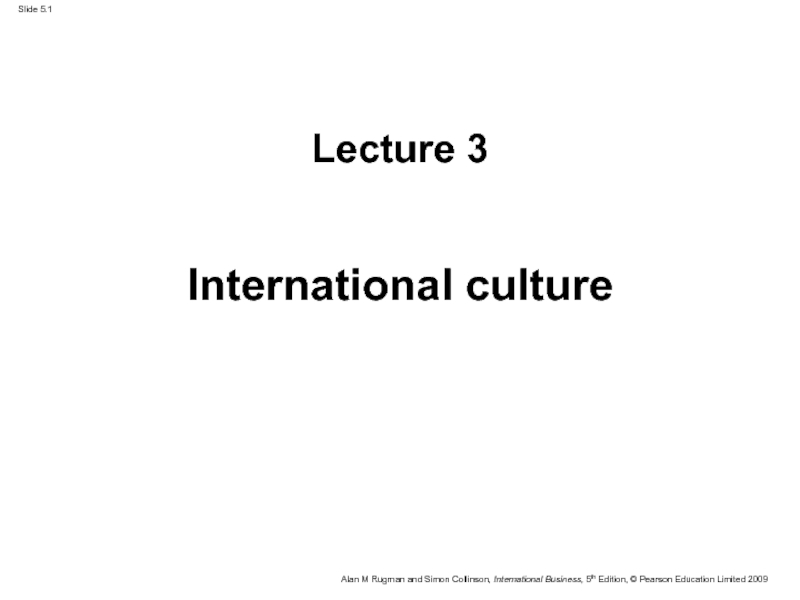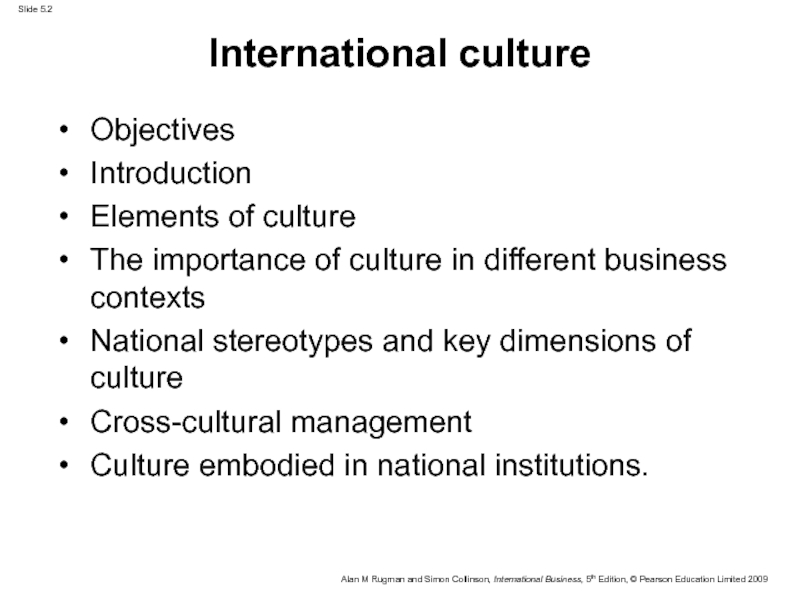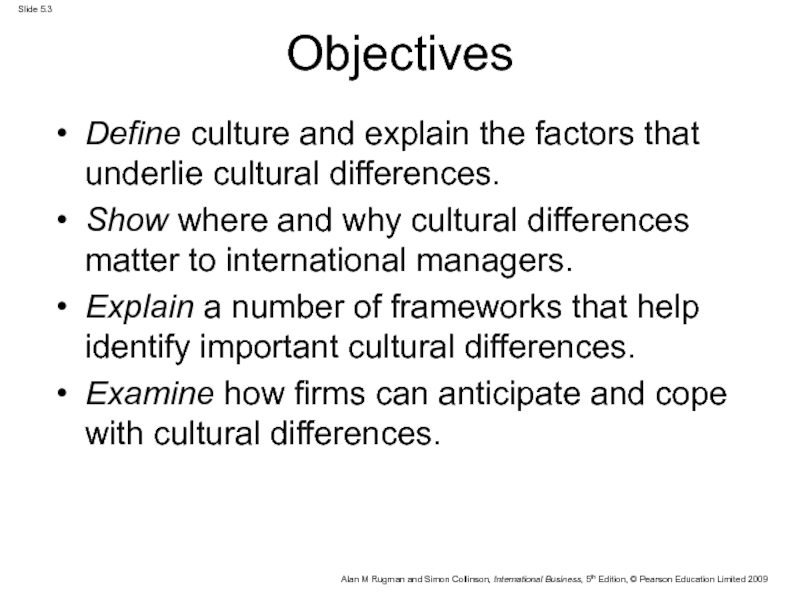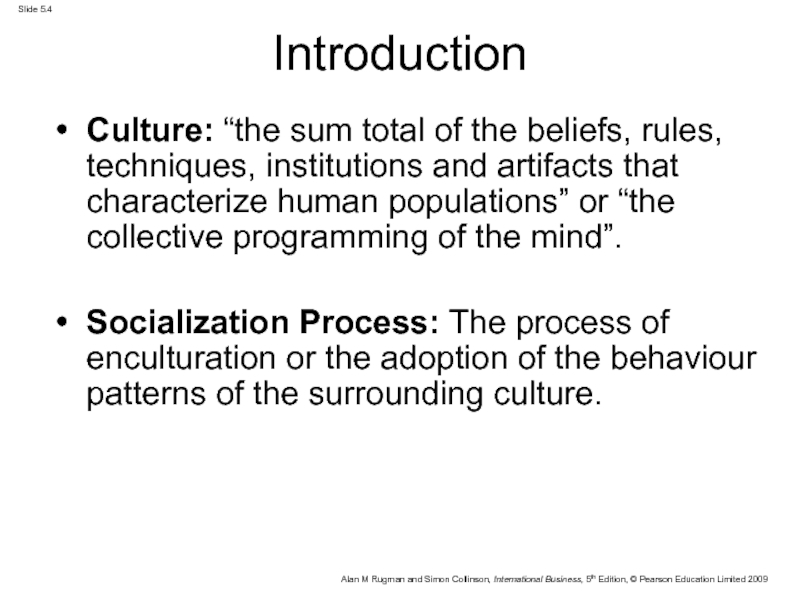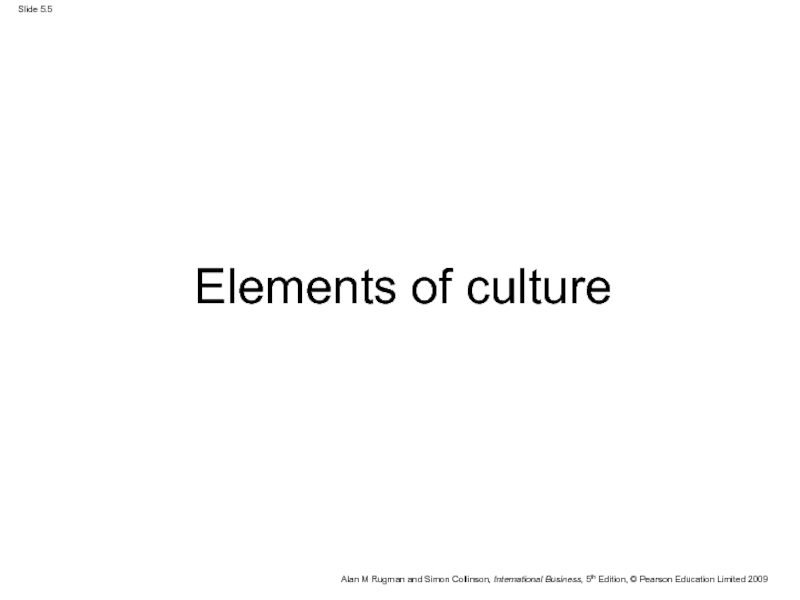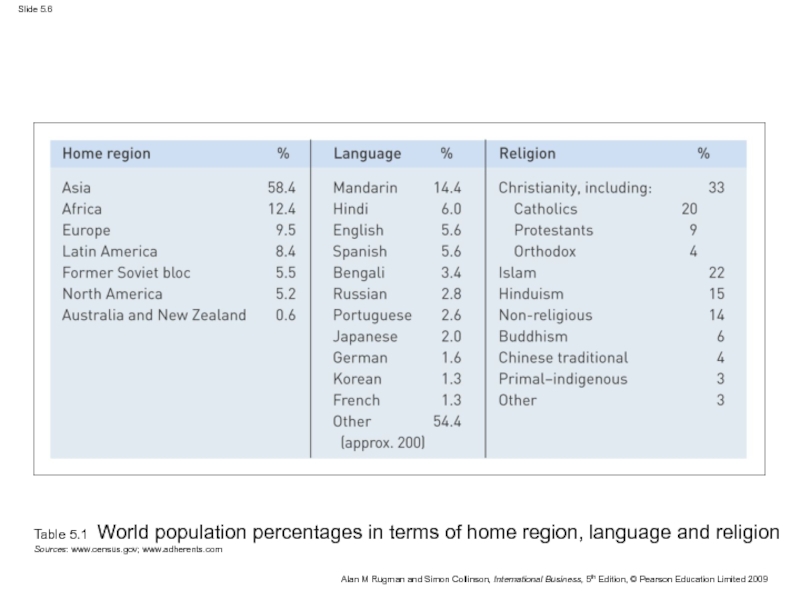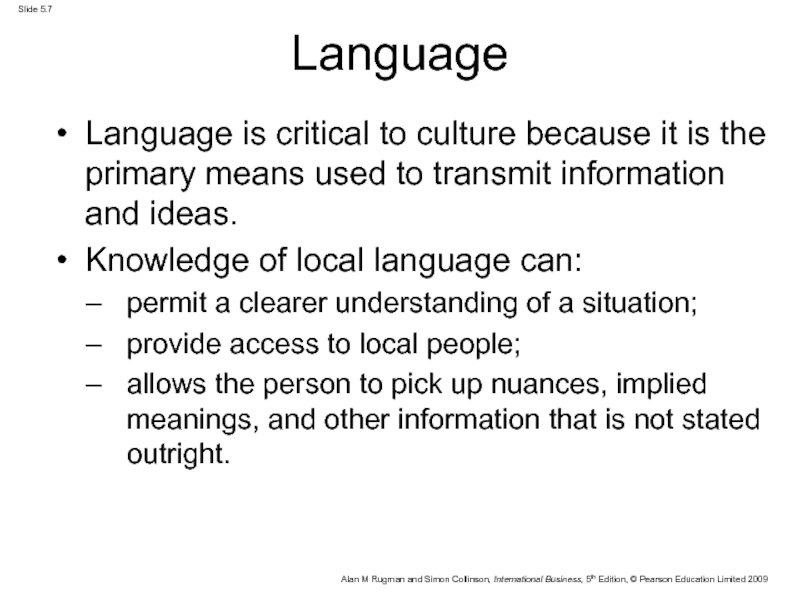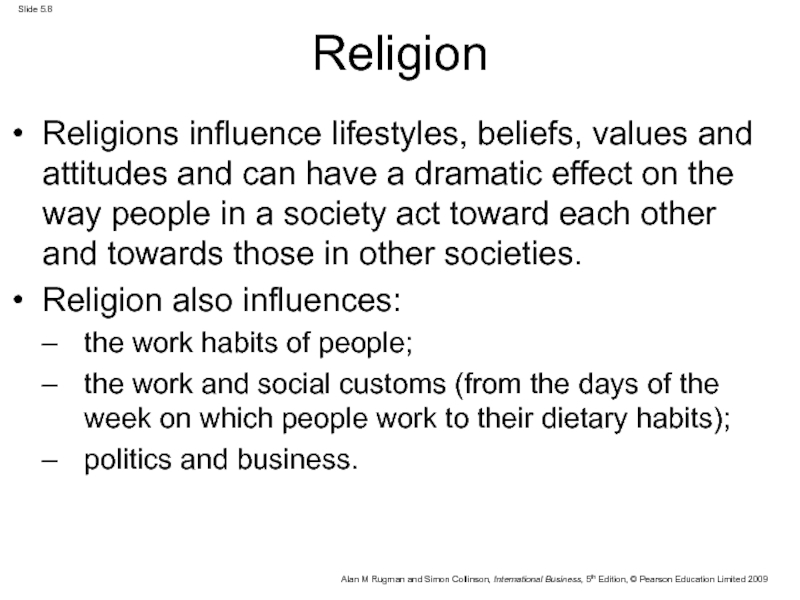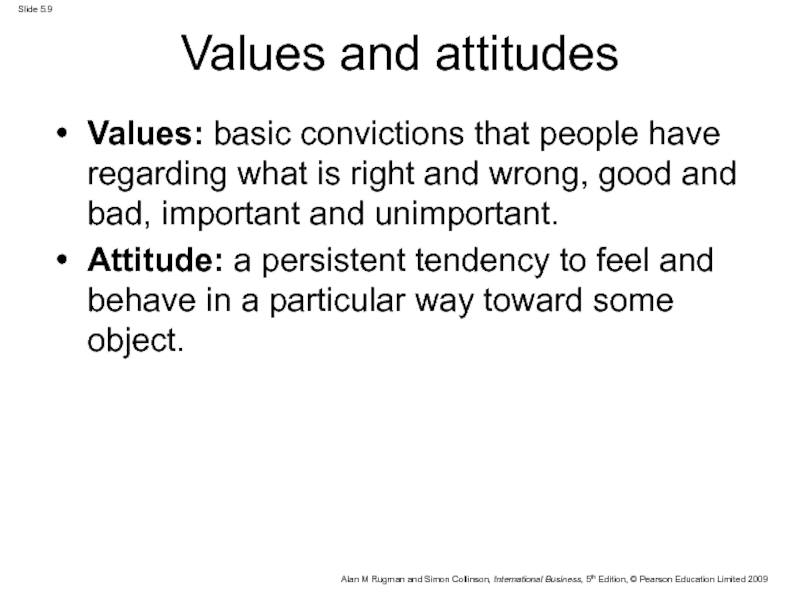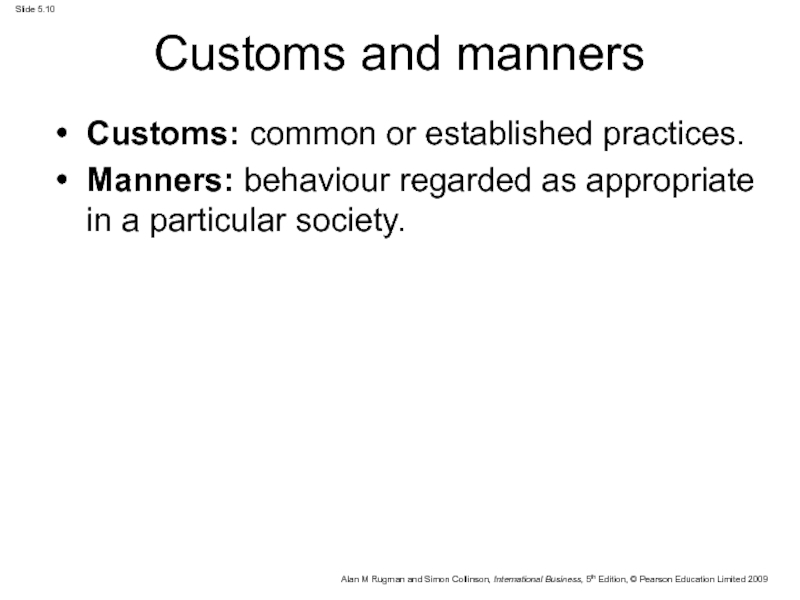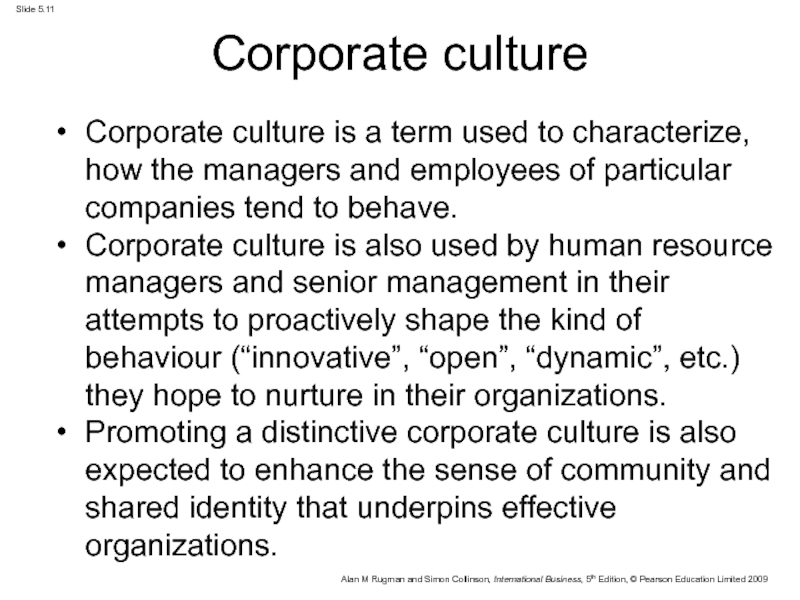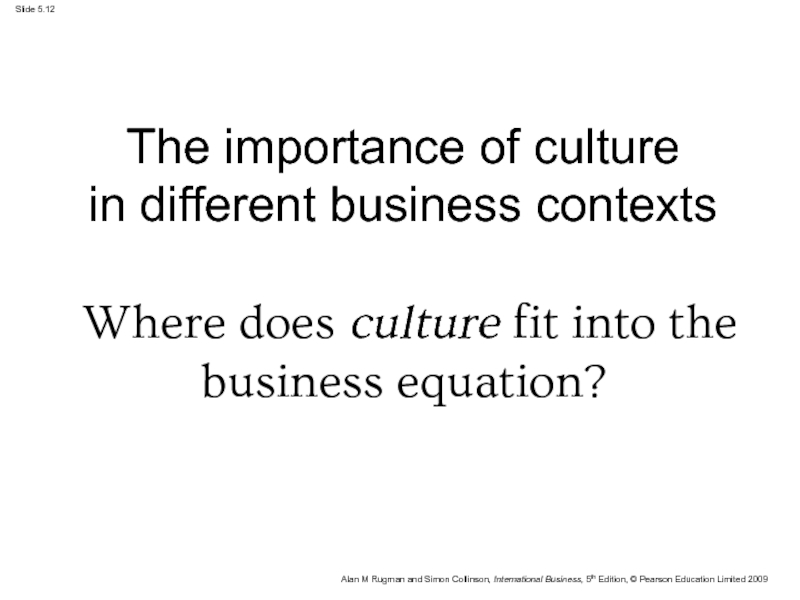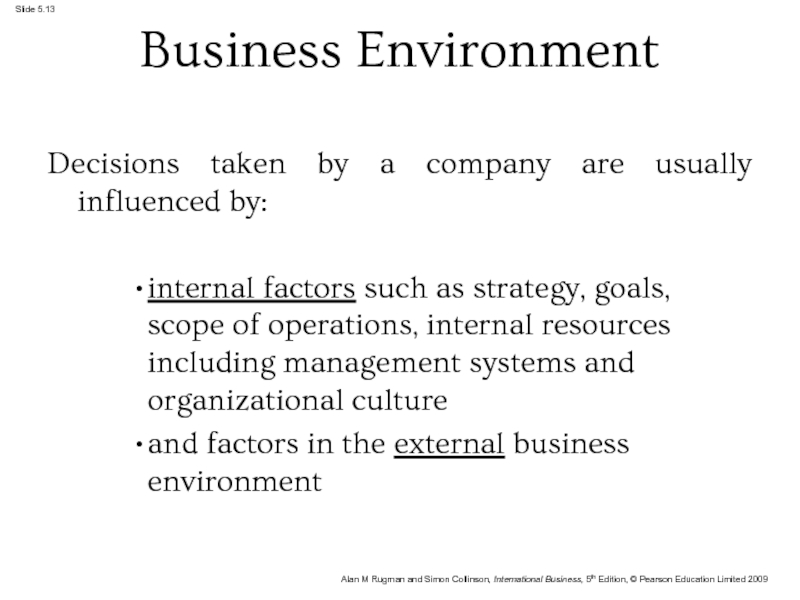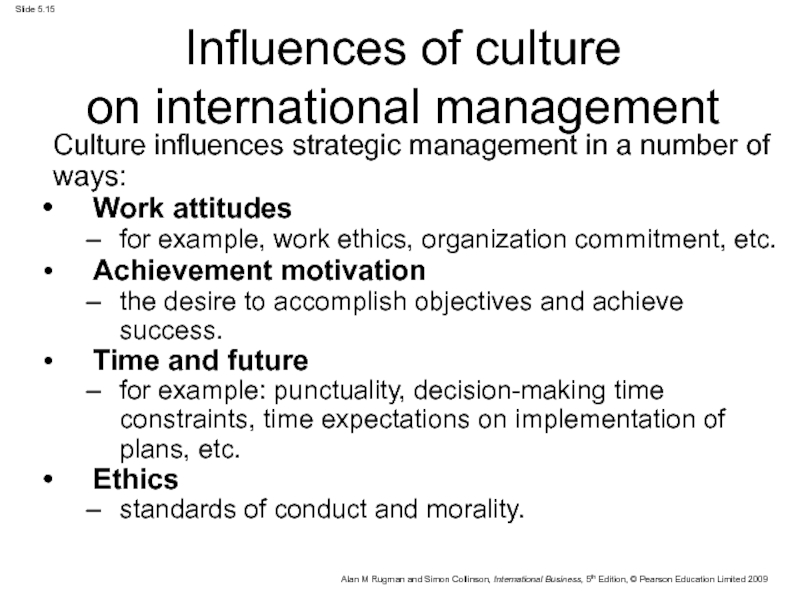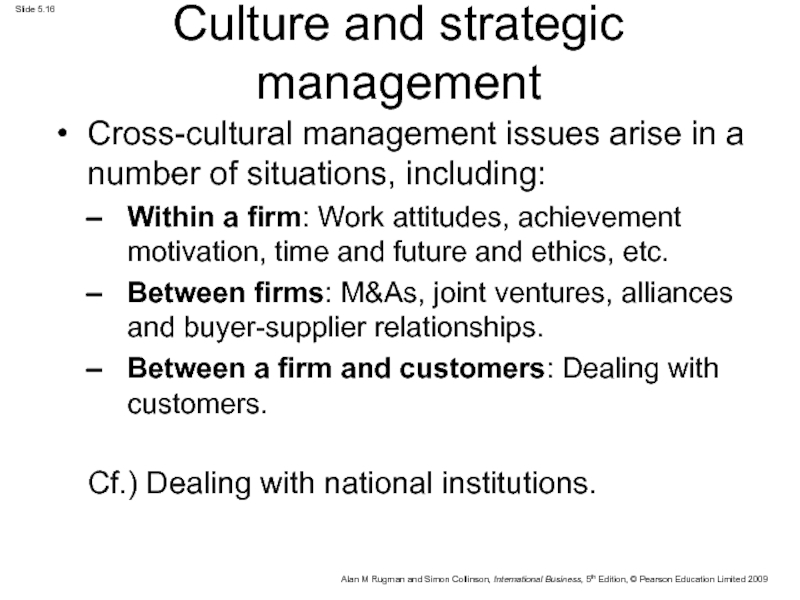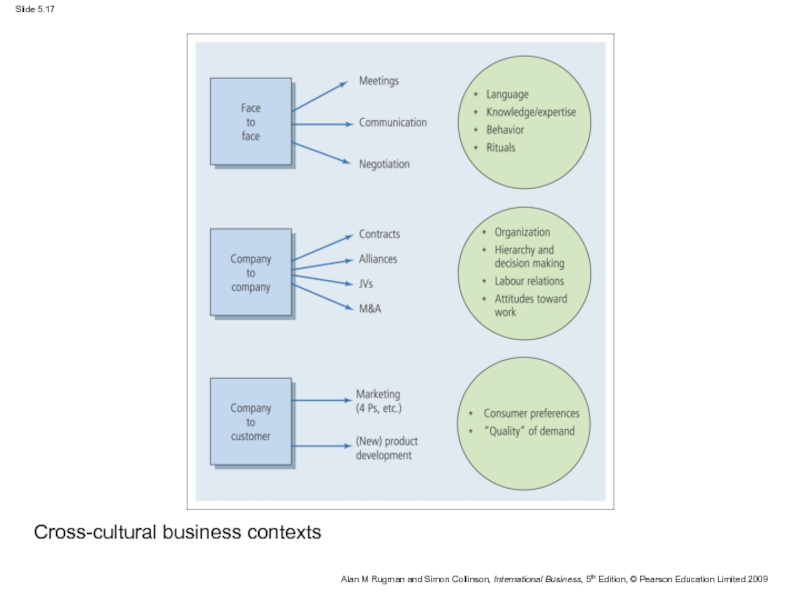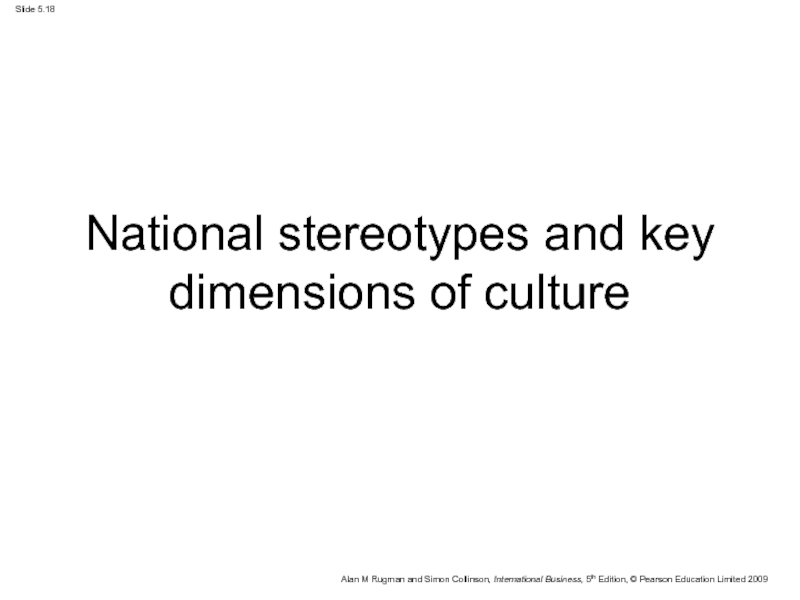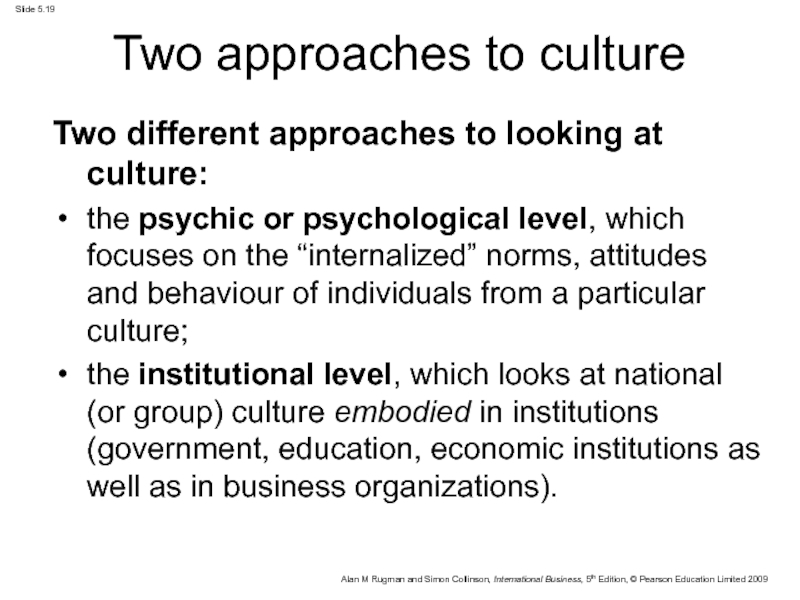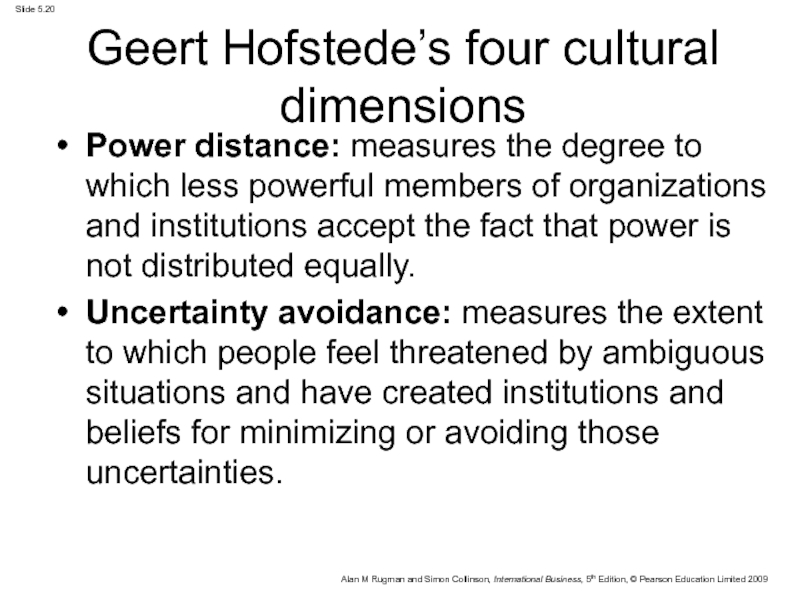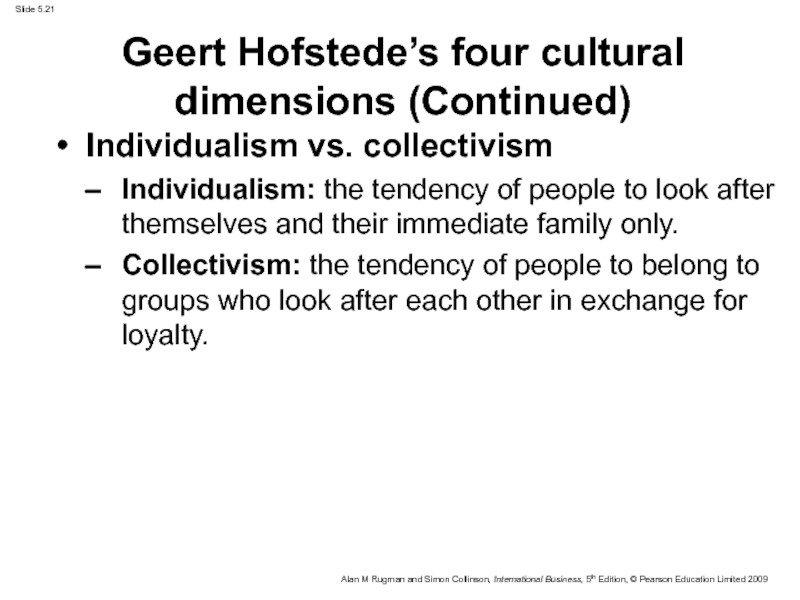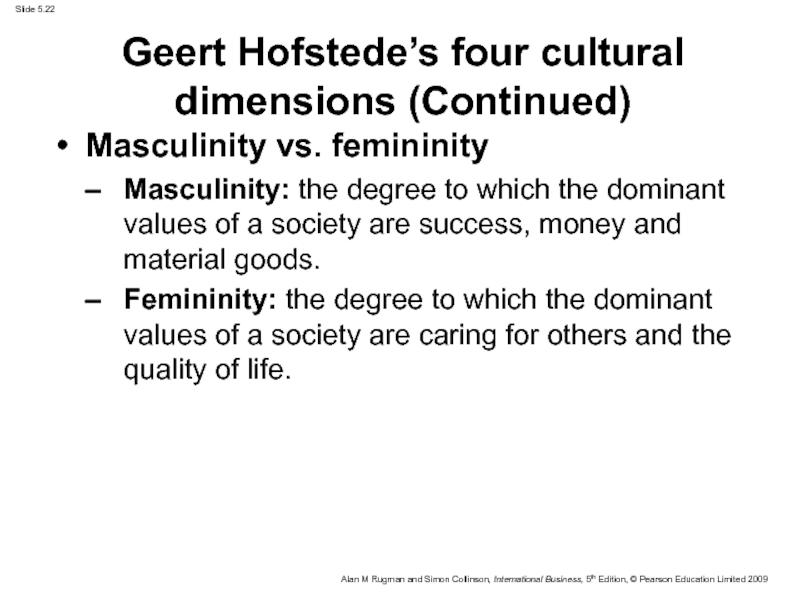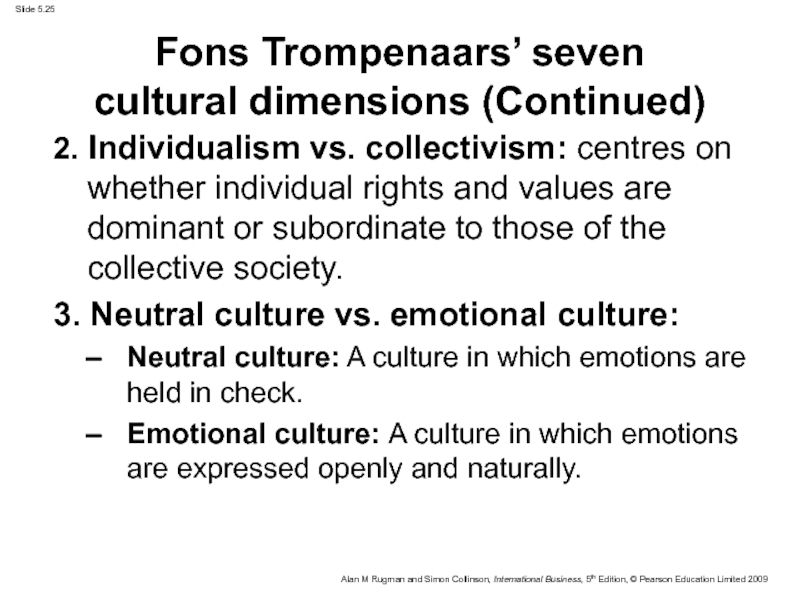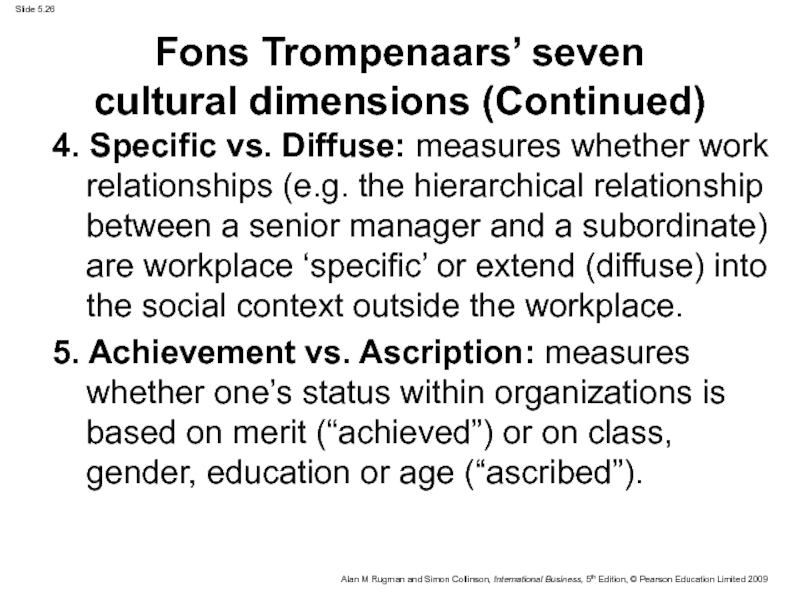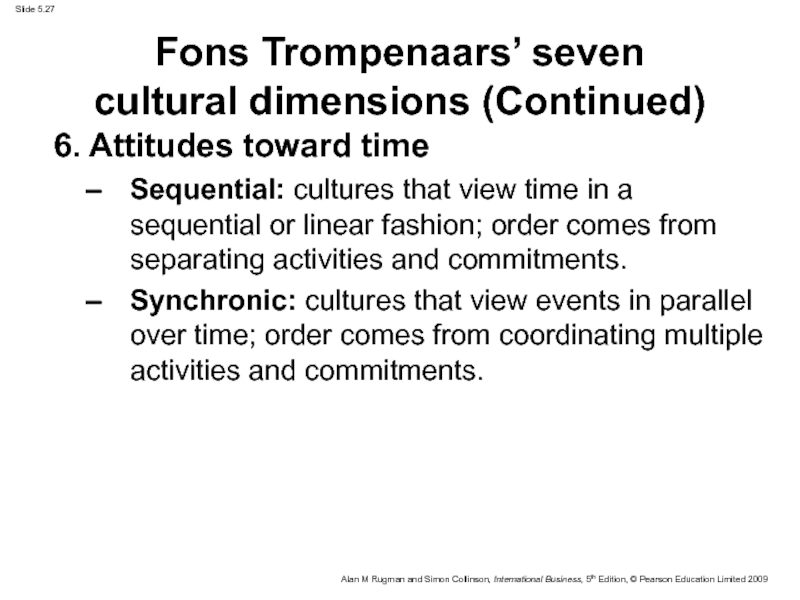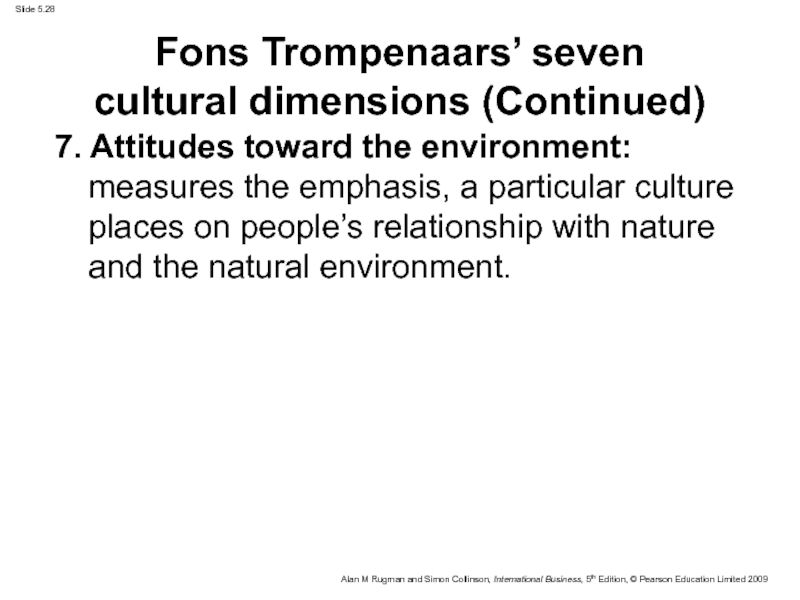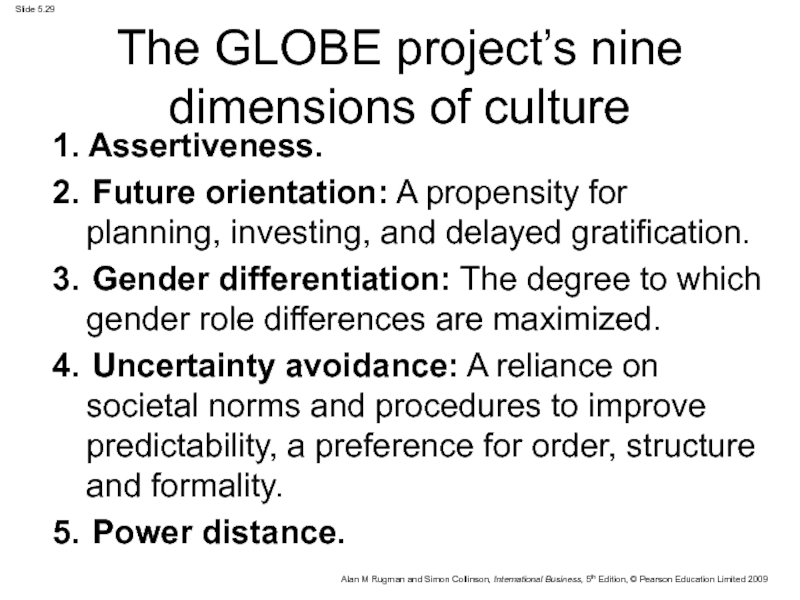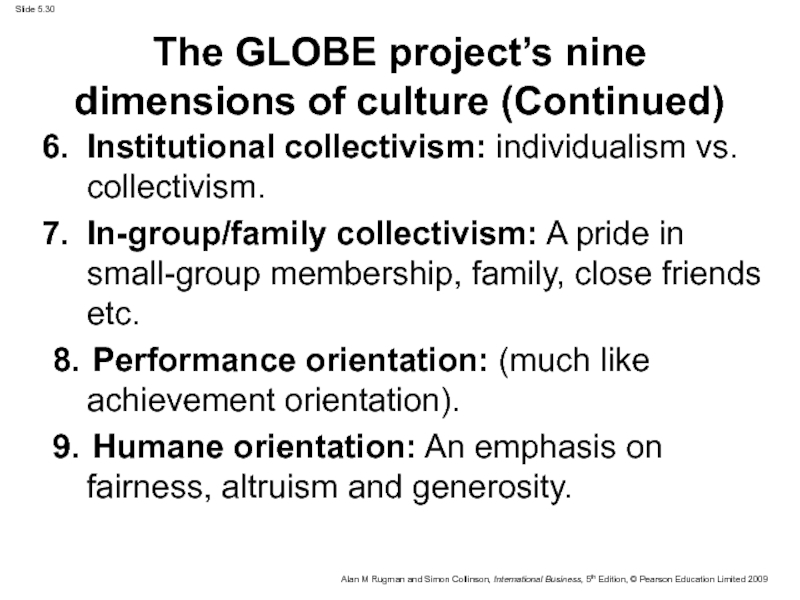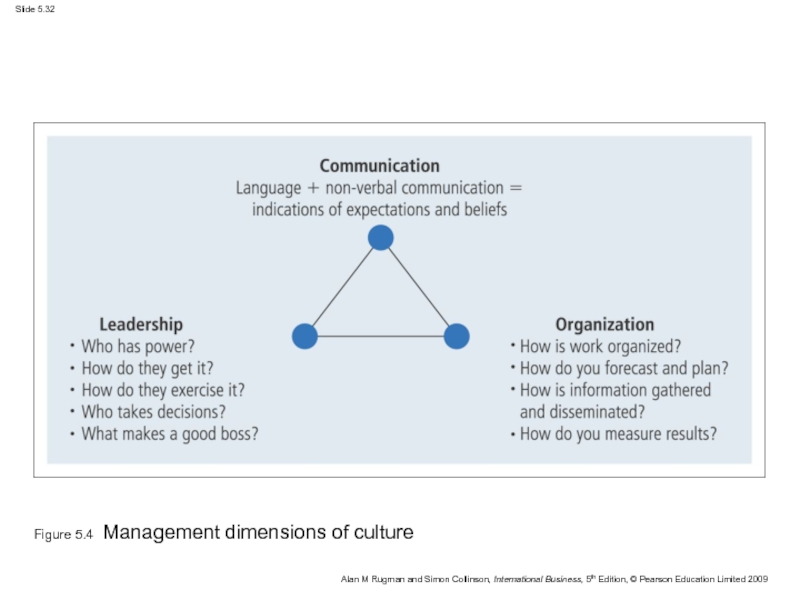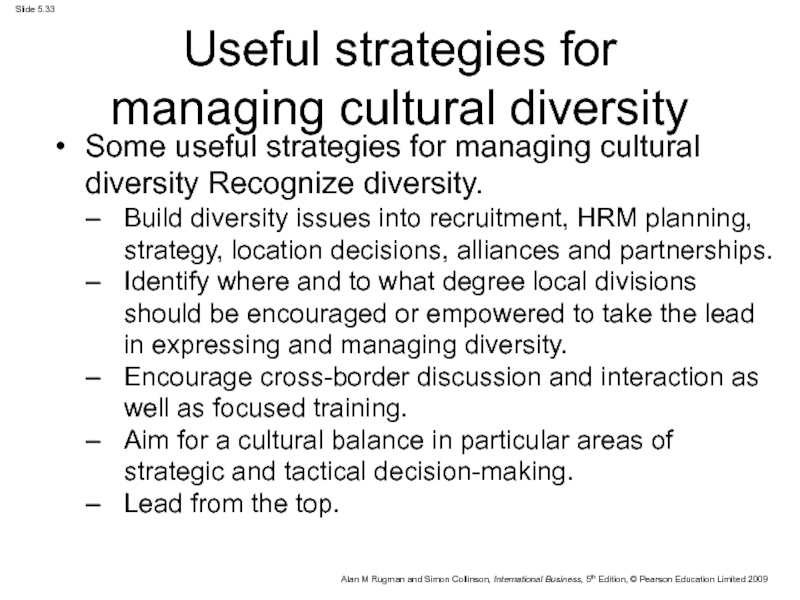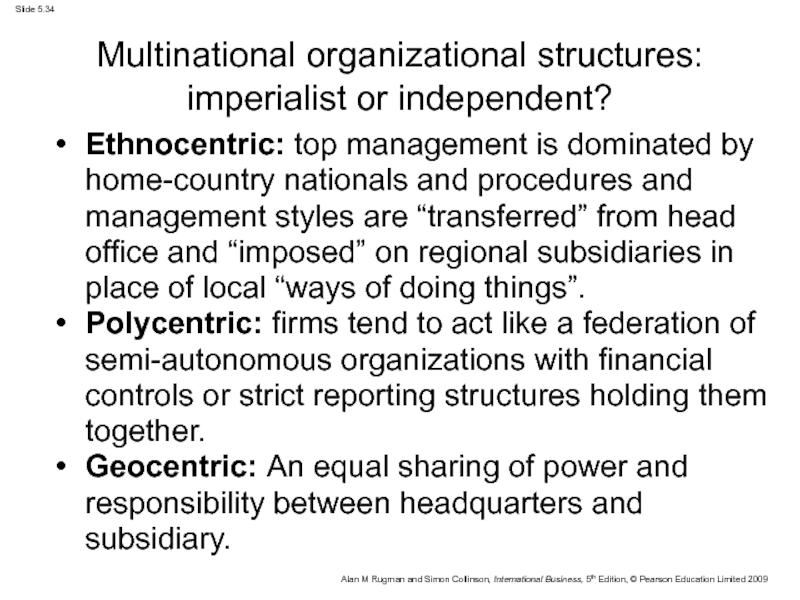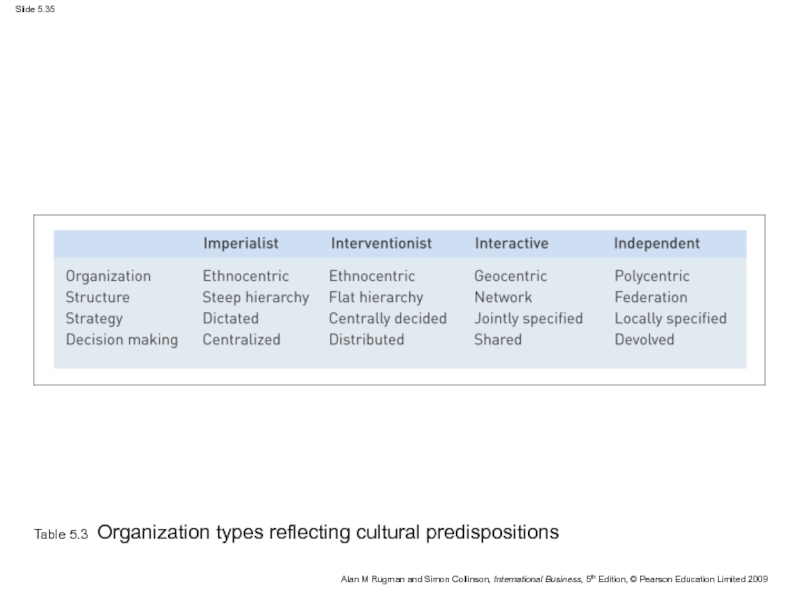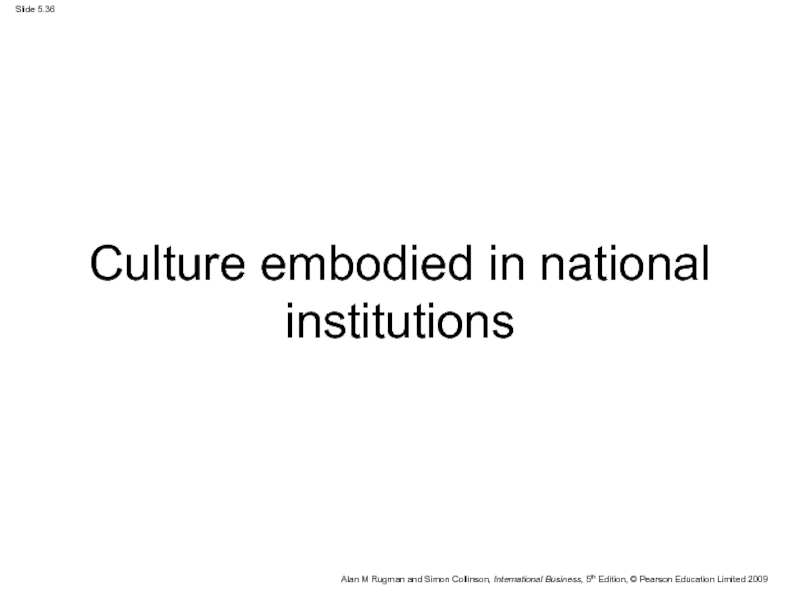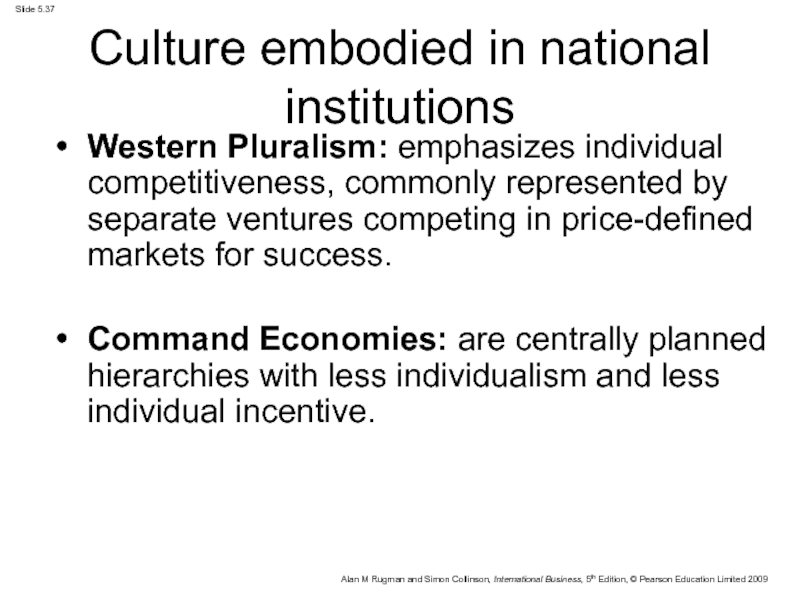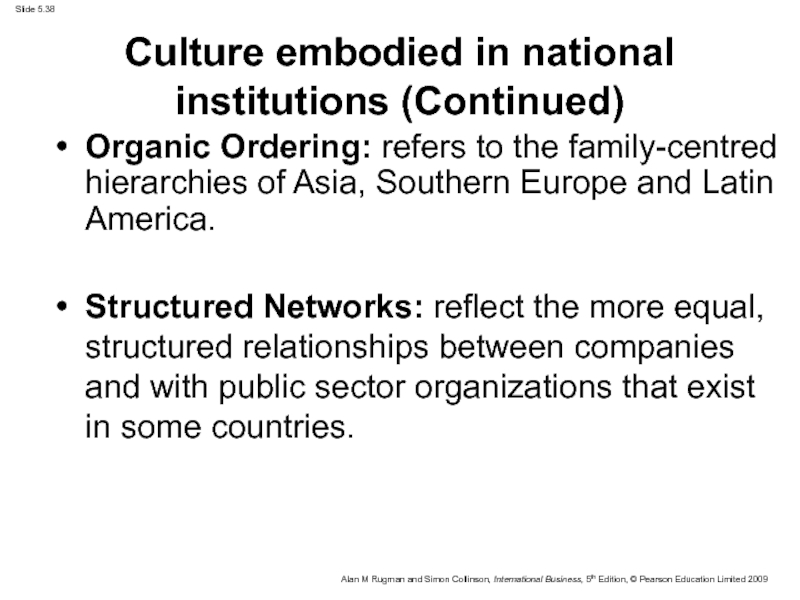Разделы презентаций
- Разное
- Английский язык
- Астрономия
- Алгебра
- Биология
- География
- Геометрия
- Детские презентации
- Информатика
- История
- Литература
- Математика
- Медицина
- Менеджмент
- Музыка
- МХК
- Немецкий язык
- ОБЖ
- Обществознание
- Окружающий мир
- Педагогика
- Русский язык
- Технология
- Физика
- Философия
- Химия
- Шаблоны, картинки для презентаций
- Экология
- Экономика
- Юриспруденция
International culture Lecture 3
Содержание
- 1. International culture Lecture 3
- 2. International cultureObjectivesIntroductionElements of cultureThe importance of culture
- 3. ObjectivesDefine culture and explain the factors that
- 4. IntroductionCulture: “the sum total of the beliefs,
- 5. Elements of culture
- 6. Table 5.1 World population percentages in terms of home region, language and religionSources: www.census.gov; www.adherents.com
- 7. LanguageLanguage is critical to culture because it
- 8. ReligionReligions influence lifestyles, beliefs, values and attitudes
- 9. Values and attitudesValues: basic convictions that people
- 10. Customs and mannersCustoms: common or established practices.Manners: behaviour regarded as appropriate in a particular society.
- 11. Corporate cultureCorporate culture is a term used
- 12. The importance of culture in different
- 13. Business Environment Decisions taken by a company
- 14. External Factors
- 15. Influences of culture on international managementCulture
- 16. Culture and strategic managementCross-cultural management issues arise
- 17. Cross-cultural business contexts
- 18. National stereotypes and key dimensions of culture
- 19. Two approaches to cultureTwo different approaches to
- 20. Geert Hofstede’s four cultural dimensionsPower distance: measures
- 21. Individualism vs. collectivismIndividualism: the tendency of people
- 22. Masculinity vs. femininityMasculinity: the degree to which
- 23. Figure 5.2 Hofstede’s power distance against individualism
- 24. Fons Trompenaars’ seven cultural dimensions 1. Universalism
- 25. 2. Individualism vs. collectivism: centres on whether
- 26. 4. Specific vs. Diffuse: measures whether work
- 27. 6. Attitudes toward time Sequential: cultures that
- 28. 7. Attitudes toward the environment: measures the
- 29. The GLOBE project’s nine dimensions of culture1.
- 30. Institutional collectivism: individualism vs. collectivism. In-group/family collectivism:
- 31. Cross-cultural management
- 32. Figure 5.4 Management dimensions of culture
- 33. Useful strategies for managing cultural diversitySome
- 34. Multinational organizational structures: imperialist or independent?Ethnocentric: top
- 35. Table 5.3 Organization types reflecting cultural predispositions
- 36. Culture embodied in national institutions
- 37. Culture embodied in national institutionsWestern Pluralism: emphasizes
- 38. Organic Ordering: refers to the family-centred hierarchies
- 39. Скачать презентанцию
Слайды и текст этой презентации
Слайд 2International culture
Objectives
Introduction
Elements of culture
The importance of culture in different business
contexts
national institutions.Слайд 3Objectives
Define culture and explain the factors that underlie cultural differences.
Show
where and why cultural differences matter to international managers.
Explain a
number of frameworks that help identify important cultural differences.Examine how firms can anticipate and cope with cultural differences.
Слайд 4Introduction
Culture: “the sum total of the beliefs, rules, techniques, institutions
and artifacts that characterize human populations” or “the collective programming
of the mind”.Socialization Process: The process of enculturation or the adoption of the behaviour patterns of the surrounding culture.
Слайд 6Table 5.1 World population percentages in terms of home region,
language and religion
Sources: www.census.gov; www.adherents.com
Слайд 7Language
Language is critical to culture because it is the primary
means used to transmit information and ideas.
Knowledge of local language
can:permit a clearer understanding of a situation;
provide access to local people;
allows the person to pick up nuances, implied meanings, and other information that is not stated outright.
Слайд 8Religion
Religions influence lifestyles, beliefs, values and attitudes and can have
a dramatic effect on the way people in a society
act toward each other and towards those in other societies.Religion also influences:
the work habits of people;
the work and social customs (from the days of the week on which people work to their dietary habits);
politics and business.
Слайд 9Values and attitudes
Values: basic convictions that people have regarding what
is right and wrong, good and bad, important and unimportant.
Attitude:
a persistent tendency to feel and behave in a particular way toward some object.Слайд 10Customs and manners
Customs: common or established practices.
Manners: behaviour regarded as
appropriate in a particular society.
Слайд 11Corporate culture
Corporate culture is a term used to characterize, how
the managers and employees of particular companies tend to behave.
Corporate
culture is also used by human resource managers and senior management in their attempts to proactively shape the kind of behaviour (“innovative”, “open”, “dynamic”, etc.) they hope to nurture in their organizations. Promoting a distinctive corporate culture is also expected to enhance the sense of community and shared identity that underpins effective organizations.
Слайд 12The importance of culture in different business contexts Where does
culture fit into the business equation?
Слайд 13Business Environment
Decisions taken by a company are usually influenced by:
internal
factors such as strategy, goals, scope of operations, internal resources
including management systems and organizational cultureand factors in the external business environment
Слайд 15Influences of culture
on international management
Culture influences strategic management in
a number of ways:
Work attitudes
for example, work ethics, organization commitment,
etc. Achievement motivation
the desire to accomplish objectives and achieve success.
Time and future
for example: punctuality, decision-making time constraints, time expectations on implementation of plans, etc.
Ethics
standards of conduct and morality.
Слайд 16Culture and strategic management
Cross-cultural management issues arise in a number
of situations, including:
Within a firm: Work attitudes, achievement motivation, time
and future and ethics, etc.Between firms: M&As, joint ventures, alliances and buyer-supplier relationships.
Between a firm and customers: Dealing with customers.
Cf.) Dealing with national institutions.
Слайд 19Two approaches to culture
Two different approaches to looking at culture:
the
psychic or psychological level, which focuses on the “internalized” norms,
attitudes and behaviour of individuals from a particular culture;the institutional level, which looks at national (or group) culture embodied in institutions (government, education, economic institutions as well as in business organizations).
Слайд 20Geert Hofstede’s four cultural dimensions
Power distance: measures the degree to
which less powerful members of organizations and institutions accept the
fact that power is not distributed equally.Uncertainty avoidance: measures the extent to which people feel threatened by ambiguous situations and have created institutions and beliefs for minimizing or avoiding those uncertainties.
Слайд 21Individualism vs. collectivism
Individualism: the tendency of people to look after
themselves and their immediate family only.
Collectivism: the tendency of
people to belong to groups who look after each other in exchange for loyalty.Geert Hofstede’s four cultural dimensions (Continued)
Слайд 22Masculinity vs. femininity
Masculinity: the degree to which the dominant values
of a society are success, money and material goods.
Femininity: the
degree to which the dominant values of a society are caring for others and the quality of life.Geert Hofstede’s four cultural dimensions (Continued)
Слайд 23Figure 5.2 Hofstede’s power distance against individualism for 20 countries
Source:
Hofstede, G. (1983). The cultural relativity of organizational practices and
theories, Journal of International Business Studies, Fall, p. 92. Copyright © Geert HofstedeСлайд 24Fons Trompenaars’ seven
cultural dimensions
1. Universalism vs. particularism
Universalism: the belief
that ideas and practices can be applied everywhere in the
world without modification.Particularism: the belief that circumstances dictate how ideas and practices should be applied and somethings cannot be done the same everywhere.
Слайд 252. Individualism vs. collectivism: centres on whether individual rights and
values are dominant or subordinate to those of the collective
society.3. Neutral culture vs. emotional culture:
Neutral culture: A culture in which emotions are held in check.
Emotional culture: A culture in which emotions are expressed openly and naturally.
Fons Trompenaars’ seven
cultural dimensions (Continued)
Слайд 264. Specific vs. Diffuse: measures whether work relationships (e.g. the
hierarchical relationship between a senior manager and a subordinate) are
workplace ‘specific’ or extend (diffuse) into the social context outside the workplace.5. Achievement vs. Ascription: measures whether one’s status within organizations is based on merit (“achieved”) or on class, gender, education or age (“ascribed”).
Fons Trompenaars’ seven
cultural dimensions (Continued)
Слайд 276. Attitudes toward time
Sequential: cultures that view time in
a sequential or linear fashion; order comes from separating activities
and commitments.Synchronic: cultures that view events in parallel over time; order comes from coordinating multiple activities and commitments.
Fons Trompenaars’ seven
cultural dimensions (Continued)
Слайд 287. Attitudes toward the environment: measures the emphasis, a particular
culture places on people’s relationship with nature and the natural
environment.Fons Trompenaars’ seven
cultural dimensions (Continued)
Слайд 29The GLOBE project’s nine
dimensions of culture
1. Assertiveness.
2. Future orientation: A
propensity for planning, investing, and delayed gratification.
3. Gender differentiation: The degree
to which gender role differences are maximized.4. Uncertainty avoidance: A reliance on societal norms and procedures to improve predictability, a preference for order, structure and formality.
5. Power distance.
Слайд 30Institutional collectivism: individualism vs. collectivism.
In-group/family collectivism: A pride in
small-group membership, family, close friends etc.
8. Performance orientation: (much like achievement
orientation). 9. Humane orientation: An emphasis on fairness, altruism and generosity.
The GLOBE project’s nine
dimensions of culture (Continued)
Слайд 33Useful strategies for
managing cultural diversity
Some useful strategies for managing
cultural diversity Recognize diversity.
Build diversity issues into recruitment, HRM planning,
strategy, location decisions, alliances and partnerships. Identify where and to what degree local divisions should be encouraged or empowered to take the lead in expressing and managing diversity.
Encourage cross-border discussion and interaction as well as focused training.
Aim for a cultural balance in particular areas of strategic and tactical decision-making.
Lead from the top.
Слайд 34Multinational organizational structures: imperialist or independent?
Ethnocentric: top management is dominated
by home-country nationals and procedures and management styles are “transferred”
from head office and “imposed” on regional subsidiaries in place of local “ways of doing things”.Polycentric: firms tend to act like a federation of semi-autonomous organizations with financial controls or strict reporting structures holding them together.
Geocentric: An equal sharing of power and responsibility between headquarters and subsidiary.
Слайд 37Culture embodied in national institutions
Western Pluralism: emphasizes individual competitiveness, commonly
represented by separate ventures competing in price-defined markets for success.
Command Economies: are centrally planned hierarchies with less individualism and less individual incentive.
Слайд 38Organic Ordering: refers to the family-centred hierarchies of Asia, Southern
Europe and Latin America.
Structured Networks: reflect the more equal, structured
relationships between companies and with public sector organizations that exist in some countries.Culture embodied in national institutions (Continued)
